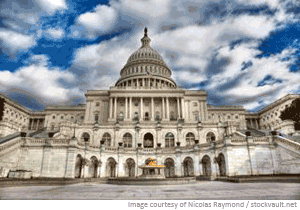
Just when you thought you knew all the acronyms, TRIA (the Terrorism Risk Insurance Act) comes back to the forefront, now known as TRIPRA (Terrorism Risk Insurance Program Reauthorization Act). First passed in 2002 in its original form, its purpose was to provide a federal (U.S. Treasury-based) reinsurance mechanism ("backstop") in the wake of the 9/11 attacks to an industry shocked at the size of expected ultimate losses. Losses from just the World Trade Center buildings are estimated at $60 billion. The insurable property losses from 9/11 were approximately $32.5 billion [1]. Of course, nearly 3000 lives were lost, entailing an additional massive amount of workers' compensation losses. As such numbers would imply, the insurers that stood behind those insurance contracts were spooked by the brave new world of the "black swan" – losses never seen before. As a result, the immediate future of insurable terrorism risk was fraught with insurance contract exclusions up to absolute and total exclusion of terrorism risk losses, though not excludable in workers' comp policies by law. Thus the need for a federal mechanism that would help the industry regain comfort with the ostensibly unpredictable.
Predictability is at the heart of insurability; underwriters typically agree to "underwrite" or insure risks that they can confidently assess. Getting some level of comfort around the frequency and severity (i.e. the likelihood and impact) of causes of loss (exposures), allows for the calculation of targeted profit and needed capital to back the risks taken. The more unpredictable the exposure, the less likely it is that insurance markets will take the risk. Terrorism is, notwithstanding the media-fueled perceptions of the frequency of events, still rare and uncommon in the United States. The problem of insurability, however, lies more in the severity of potential losses, even though infrequent. This is especially true of NBCR – nuclear, biological, chemical or radioactive sources of loss.
In an early example of an exposure dilemma, a Fortune 500 company in Texas with a large concentration of its employees in one location had its consideration of non-subscription, opting out of the Texas workers' compensation statute, stymied by one large insurer's estimated workers' compensation possible maximum loss (PML) of $5 billion. Because terrorism cannot be excluded in workers' comp policies, risk concentration is of utmost concern. This PML estimate itself bears witness to even the largest commercial insurer's ability to take this much risk from any one source. And while this insurer was not explicit about how such a large loss could be envisioned, it was obvious to me that terrorism was the scenario that spooked them most. Needless to say, this company opted not to come out from under the exclusive remedy protection of the Texas workers' comp statute and avoided the potential destruction of the company in a worst-case scenario event.
What does TRIA's federal reinsurance mechanism provide in the case of an insurable event? In its current form, the mechanism will respond only if the following criteria are met:
- An individual loss must result in at least $5 million
- The event must be a certified act of terrorism by the U.S. Treasury
- Aggregate industry losses from an event must exceed $100 million
With these criteria met, the act provides for risk sharing once aggregate insured losses exceed $100 million, but requires an insurer absorb another 20% based on prior year premiums. Above this level of risk assumption, the U.S. Treasury pays 85% of each loss dollar and the insurer 15% up to a maximum limit of $100 billion. While a truly catastrophic risk transfer mechanism, TRIA has been effective in allowing insurers to take more terrorism risk and for risk managers to find coverage where none would have been available otherwise.
So while TRIA was renewed in 2005 for two years and again in 2007 for seven additional years, it now expires in its present form on December 31, 2014. Each renewal has brought adjustments to the law, usually in favor of more risk shifting away from the U.S. Treasury and toward insurers. Hearings are now taking place with testimony from risk managers, insurers, brokers and other interested parties offering a consistent refrain that this federal reinsurance mechanism should continue if not become a permanent source of risk financing. Its protections can continue to enable the broader industry of insurers, self-insurers and even hybrid insurers like captives to take risks that remain highly unpredictable but include exposures that are not going away and, in fact, most would say are growing in both potential frequency and severity in the United States.
The regular need for terrorism insurance to secure debt and the selective non-renewal of some workers' compensation policies by certain insurers now fall among the real world issues affecting risk managers. With insurers becoming increasingly uncomfortable with the concentration of risk surrounding some insureds and the insecurity caused by ongoing debate about whether or not to extend or make TRIA permanent, risk managers find growing uncertainty in the insurance renewal process. Unfortunately, the acceptable risk financing alternatives available to affected companies, some of whom will no doubt be our clients, are few and far between.

Chris Mandel, SVP, Strategic Solutions
[1] Claim Journal, 9/9/2011, "9/11's Costly Insurance Impact"